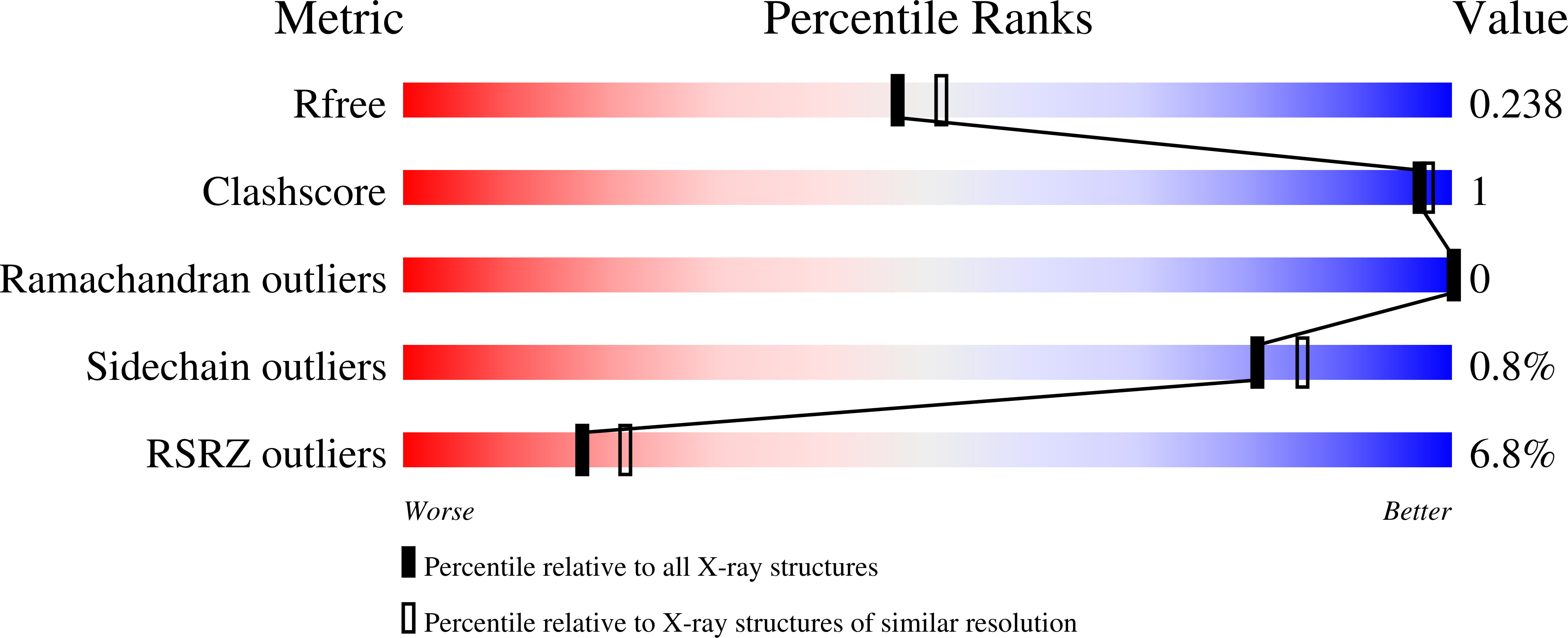Mono- and Bivalent 14-3-3 Inhibitors for Characterizing Supramolecular "Lysine Wrapping" of Oligoethylene Glycol (OEG) Moieties in Proteins.
Yilmaz, E., Bier, D., Guillory, X., Briels, J., Ruiz-Blanco, Y.B., Sanchez-Garcia, E., Ottmann, C., Kaiser, M.(2018) Chemistry 24: 13807-13814
- PubMed: 29924885
- DOI: https://doi.org/10.1002/chem.201801074
- Primary Citation of Related Structures:
6FN9, 6FNA, 6FNB, 6FNC - PubMed Abstract:
Previous studies have indicated the presence of defined interactions between oligo or poly(ethylene glycol) (OEG or PEG) and lysine residues. In these interactions, the OEG or PEG residues "wrap around" the lysine amino group, thereby enabling complexation of the amino group by the ether oxygen residues. The resulting biochemical binding affinity and thus biological relevance of this supramolecular interaction however remains unclear so far. Here, we report that OEG-containing phosphophenol ether inhibitors of 14-3-3 proteins also display such a "lysine-wrapping" binding mode. For better investigating the biochemical relevance of this binding mode, we made use of the dimeric nature of 14-3-3 proteins and designed as well as synthesized a set of bivalent 14-3-3 inhibitors for biochemical and X-ray crystallography-based structural studies. We found that all synthesized derivatives adapted the "lysine-wrapping" binding mode in the crystal structures; in solution, a different binding mode is however observed, most probably as the "lysine-wrapping" binding mode turned out to be a rather weak interaction. Accordingly, our studies demonstrate that structural studies of OEG-lysine interactions are difficult to interpret and their presence in structural studies may not automatically be correlated with a relevant interaction also in solution but requires further biochemical studies.
Organizational Affiliation:
Chemical Biology, Zentrum f¨¹r Medizinische Biotechnologie, Fakult?t f¨¹r Biologie, Universit?t Duisburg-Essen, Universit?tsstr. 2, 45117, Essen, Germany.



















